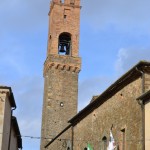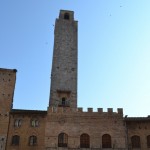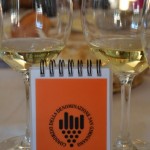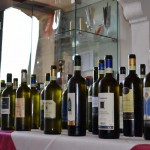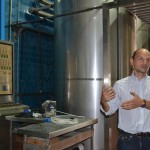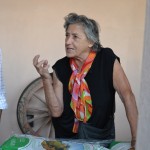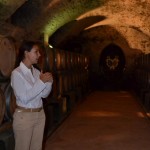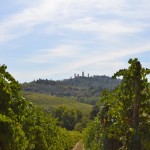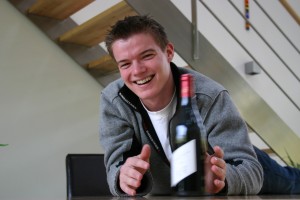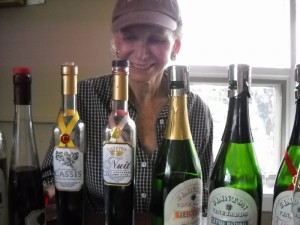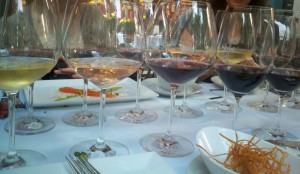 Back in the day, Captain & Tennille sang about Muskrat Love, but these days everyone seems to have fallen, not for rodents, but for the Muscat grape. In fact, Nielsen data presented in January 2012 indicated that sales of Moscato (which is a wine produced from the Muscat grape) has risen more than 70% from 2010 to 2011.
Back in the day, Captain & Tennille sang about Muskrat Love, but these days everyone seems to have fallen, not for rodents, but for the Muscat grape. In fact, Nielsen data presented in January 2012 indicated that sales of Moscato (which is a wine produced from the Muscat grape) has risen more than 70% from 2010 to 2011.
Among the oldest grape varieties in the world, Muscat shines in a plethora of places from the cool climate of Piedmont where it sparkles as Asti and Moscato d’Asti to the warmth of Southern France where it dazzles as Muscat de Beaumes-de-Venise. And, equally notable, it thrives off the coast of mainland Greece in the Aegean Sea.
Here, the Mediterranean island of Samos nurtures the Muscat Blanc à Petits Grains grape with its steep, terraced vineyards (“pezoules”), deep soils, high altitude and abundant sunshine (3,300 hours per year). Home to the philosopher Pythagoras, of triangular fame (which is presumably better than singular fame), Samos has produced Muscat wine for centuries and is closely linked with its use for the liturgies surrounding the sacrament of Holy Eucharist service of the Roman Catholic Church.
In more modern history, the Union of Winemaking Cooperatives of Samos (UWC) was established in 1934 and was among the first cooperatives in Greece. With the participation of 26 wine growing villages, EOSS represents all of the island’s growers. In this regard, it is responsible for wine production (it maintains two full-scale wineries for its members), along with sales and marketing activities on behalf of brand Samos.
Given that 97% of the island’s 4,000 acres of vineyards are planted to Muscat, Samos wines are nearly synonymous with this indigenous variety. As per Greek wine laws, Samos wines are one of eight dessert wines classified under the Appellation d’Origine Contrôlée (AOC) designation and are produced in three different styles: Samos Doux, Samos Vin Doux Naturel and Samos Nectar.
Samos Doux is known as a vin de liqueur (aka mistela), produced by the addition of a neutral spirit almost immediately after pressing. With fermentation stopped so quickly, these wines have high levels of residual sugar (200 g/l). The Samos Vin Doux Naturel is akin to the fortified wines of Languedoc-Roussillon, whereby the neutral spirit is added after fermentation has begun. Conversely, Samos Nectar wines are not fortified at all; rather, their sweetness is a result of drying the grapes in the sun to concentrate the sugars before fermentation and then being aged in cask for three years. Although still quite sweet, these latter two wines are less sweet than the Samos Doux wines.
With rich, unctuous notes that range from honey, apricot and candied citrus to burnt orange and butterscotch, what’s not to love?
SAMOS NECTAR
Despite the high levels of residual sugar in these wines, they do have balanced acidity to keep them from becoming cloying on the palate.
However, with that said, these are decidedly dessert wines and pair best with rich, flavorful cheeses (such as sharp cheddar or intense blue cheese), or fruit- or custard-style desserts (i.e. strawberry cheesecake, zabaglione).
A third option is to pair them in a cocktail as their aromatic profile and sweet taste can balance bitter elements and add weight to the palate. Dushan Zaric, co-owner and bartender of the New York City-based Macao Trading Company, has crafted a number of Samos-based cocktails, which work well, including the Nectar Fix. And, with the arrival of summer’s warmer weather, a chilled cocktail might be just the thing.
Nectar Fix
Glass:
Martini-Cocktail
Ingredients:
1¼ ounces Samos Nectar
1 ounce Rye
½ ounce Campari
1 fresh strawberry, quartered
fresh strawberry, halved, for garnish
Directions:
Pour all ingredients including the quartered strawberry into a mixing glass. Add large, cold ice. Stir for 40 revolutions. Strain into a Martini-Cocktail glass and garnish with half a strawberry.

